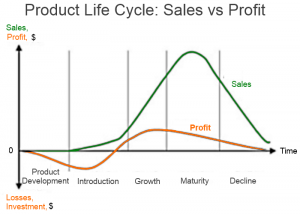In their book ‘Blue Ocean Strategy’ W.Chan Kim and Renee Mauborgne describe four organisational hurdles to strategy execution. Their description relates to the implementation of a Blue Ocean Strategy but in truth it applies equally to any strategy. The four organisational hurdles are: 1. Being wedded to the status quo, 2. Limited resources, 3. Unmotivated staff and 4. Opposition. No doubt we have all seen one or more of these hurdles to strategy execution.
Typically any organisation, when faced with these obstacles, will look at ways to increase budgets to counter the status quo and gain additional resources, motivate staff and knock-out the opposition. The bigger the strategy, the bigger the budget required. The most successful strategy implementations, however, do not require bigger budgets. They require someone to to identify and act upon the factors that have a disproportionate influence within (and external to) the organisation. This is called Tipping Point Leadership. A tipping point leader exploits the fact that in every organisation there are things that have a disproportionate influence on performance. These can be people or activities.
Wedded to the Status Quo
Cultural change is almost always considered to be the biggest problem when looking at significant strategic change. People, usually the most valuable asset, on the whole find it difficult to change. Simply telling them that the ‘numbers do not add up’ often provokes an opposite reaction to the one desired. People working for a company that outwardly states they are going down the pan are more likely to look at job adverts than work to save the company. More often, they will tend not to believe the numbers anyway. Numbers are too remote to act as agents of change. Tipping point leadership will show employees the reality of the situation on a more emotional and sensory level. This can be done by placing the employee in the “customer’s shoes”. If an employee can experience first hand what a customer is experiencing, they are more likely to respond positively to changes that will make the situation better. Change the status quo with sensory evidence not with facts and figures.
Limited Resources
Once an organisation can see the reality of the need for strategic change, it will almost always look towards bigger budgets to resolve the problem. If customer service is poor, then add more customer service representatives. If sales are low, then add more salespeople. A tipping point leader will focus hard on the resources available and apply the 80-20 rule. 80% of the benefit can be gained through focus on 20% of the problems. The tipping point leader will identify the area of activity that will benefit most from applied resources, those areas that will give the biggest bang for the buck. In the 1990’s when crime was at an all time high in New York, newly appointed Chief of Police William Bratton noted that 5% of the human resources budget was allocated to the narcotics unit. An estimated 70% of crimes were attributable to narcotics usage. Batton changed the balance and drug related crime plummeted.
Unmotivated Staff
Motivating staff to accept strategic change has always been considered a priority. Making them aware of the strategy is the first problem, let alone getting them to the point where they agree with it. Strategy is often seen as a remote activity created by people in ivory towers that do not understand the business. A tipping point leader will not look to create informational campaigns or masses of documentation or conduct cascade programmes. They will once again focus. This time on key individuals or ‘kingpins’. Within any organisation there are people who have unusually high levels of influence. This may be due to the position in the leadership structure or because of their experience and expertise or simply their popularity. By getting these people on board, the rest of the organisation will inevitably follow. There are two basic ways of doing this – first create an environment where all of these people are equal and all have a role to play that can be examined publicly (and fairly). The kingpins will usually step up and take the responsibility. Second – show them that their part of the strategy is under their control and achievable.
Opposition
No matter what you do, there will always be opposition to your strategy. The opposition will tend to come from those that feel disenfranchised or believe the forthcoming changes will negatively impact them. The tipping point leader needs to deal with this on two fronts – gaining intelligence and dealing with dissenters quickly. Fore-armed to fore-warned. By having someone on the leadership team that has an intimate knowledge of the workings of the organisation and its people, a tipping point leader can gain valuable information about levels of support. The key is to deal with dissenters early. Either through appeasement, that is by ensuring they understand what their new role will be and ensuring they buy-in to it or by release, that is to let them go early in the knowledge they will not provide a positive influence. These can be tough decisions, but the need to be made early.
Overcoming the four hurdles to strategy execution is about challenging conventional wisdom and not reaching for the cheque book to introduce new strategies. It is about utilising existing resources more effectively and making hard decisions early. For more information of how to create and implement effective strategies take a look at one of our strategy workshop facilitation courses.
Business & Finance Articles on Business 2 Community(125)
Report Post






